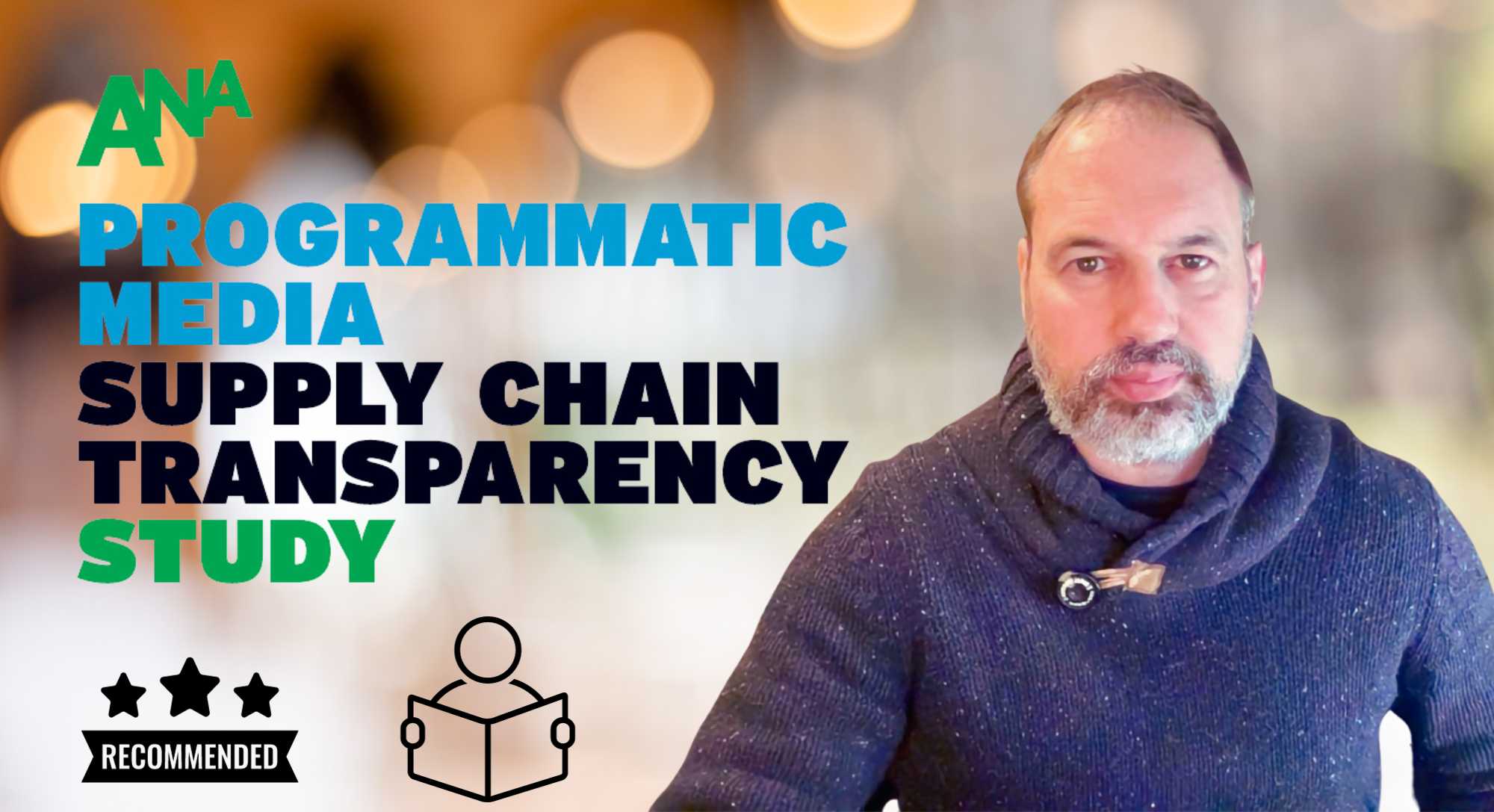Having worked in the media industry for over 25 years, I have personally witnessed the transformative impact of programmatic media on advertising.
However, the recently released findings from the ANA's Programmatic Media Supply Chain Transparency Study, which was made public on December 5th, 2023, have unveiled crucial insights that advertisers need to prioritise in order to reduce waste and maximise the effectiveness of their programmatic media expenditure.
After an extensive and meticulous two and a half years of research, the comprehensive study, consisting of 125 pages, has finally provided the long-awaited answers to a problem that has been the subject of ongoing debates without a clear resolution.
For years, we have been aware that only a small portion of an advertiser's spend on programmatic media was actually seen by a real audience. However, there has never been definitive proof to support this claim. Until now...
Key Findings
The study uncovered a concerning truth: only 36 cents of every ad dollar invested in a Demand-Side Platform (DSP) effectively reaches the consumer.
This inefficiency is due to a combination of transaction costs (29%) and loss of media productivity costs (35%), including non-viewable and Invalid Traffic (IVT) impressions, as well as non-measurable and Made for Advertising (MFA) ad spend.
Abintus Recommendations
Based on the research, we have come up with some crucial recommendations to help advertisers navigate the complexities of programmatic advertising and take advantage of its potential efficiency gains.
1. Website Optimisation: Audit the number of websites used in your programmatic campaigns. A focus on 75 to 100 trusted sellers can significantly reduce the risk of non-viewable and fraudulent inventory, enhancing brand safety.
2. MFA Website Scrutiny: Made for Advertising (MFA) websites, accounting for a significant portion of programmatic budget, demand careful evaluation. Advertisers must align these sites with their brand suitability standards and clarify their tolerance for MFA inventory.
3. Inclusion Lists Over Exclusion Lists: Curate publisher domains that align with your audience and brand values. Regularly update these lists to focus on desired sites rather than attempting to exclude the undesirable.
4. Direct Inventory Supply Paths: Prioritise directness in supply chains to reduce costs and carbon footprint. Trusted sellers should be your go-to for high-quality, authentic inventory.
5. Contractual Transparency: Establish direct contracts with primary supply chain partners, including DSPs and SSPs, to maximise transparency and data access.
6. SSP Optimisation Strategy: Consolidate spending with a few preferred SSPs, ideally five to seven, to cover nearly the entire supply.
7. Address Information Asymmetry: Understand the dynamics of information imbalance in programmatic advertising and take steps to close this gap.
8. Active Media Investment Stewardship: Appoint a chief media officer to oversee internal media management, ensuring performance, accountability, and transparency.
9. Agency Transparency: Ensure clarity on whether your agency is purchasing media as an agent or selling inventory acquired as a principal.
10. PMPs vs. OMPs: Reassess the value of Private Marketplaces (PMPs) against Open Marketplaces (OMPs), considering quality and cost.
11. Ad Quality and Price Measurement: Embrace log-level data to assess ad quality and price accurately, focusing on TrueCPM as a key performance indicator.
12. Balance Low-Cost Inventory with Ad Quality: Be prepared to accept higher CPMs for reducing or eliminating MFA sites.
13. Log-Level Data Utilisation: Audit your supply chain to assess log-level data availability and connect DSP and ad verification data for deeper insights.
14. Optimise Measurability and Viewability: Work with publishers accepting ad verification tags and employ services to optimise these metrics.
15. Combat Invalid Traffic (IVT): Develop a comprehensive plan to identify and filter IVT, leveraging technologies from accredited anti-fraud vendors.
16. Sustainability in Programmatic Media: Understand the carbon footprint of your programmatic purchases and strive for more direct, efficient buys.
Next Steps
In this era of skyrocketing ad costs, addressing ad wastage is more than just a savvy move – it's a necessity for any business wanting to stay competitive and see a solid return on their advertising investments.
Sure, the road to effective media management might seem like a tricky hike, but with the right guide, it's absolutely navigable. So whether you're using media agencies or buying most of your programmatic media in-house, why not join us on this journey? Together, we can help you cut down on ad wastage, and help your business unlock its true advertising potential.
Need help to start your media transformation journey? Let's chat! Schedule a consultation with us today and let Abintus help you take control of your advertising investments.
Remember, as one of our clients put it, partnering with Abintus is "absolutely the right decision" to take control of your ad costs and waste. We look forward to hearing from you!
--------------------------------------------------------------------------------
Author Expertise and Experience:
Philippe Dominois is co-founder and CEO of Abintus Consulting, and Head Coach at the Abintus Academy. He has over 25 years of international media experience, having worked on the media agency side, client side, and media auditing side throughout his career. Philippe has authored hundreds of articles over the years that focus on media management best practices.
Media Auditing Guide: Click Here
Media Agency Pitch Management Guide: Click Here



